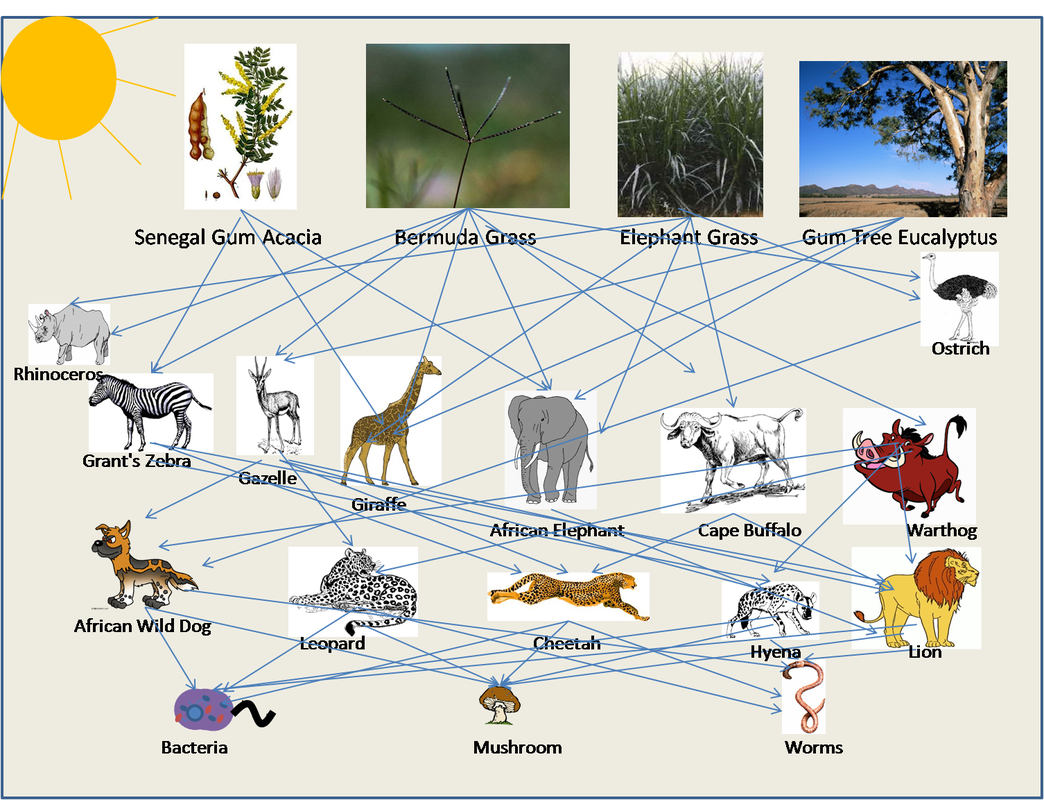
foodweb interaction with explanation Savanna
Food chains in the savanna Producers in the Savanna Primary consumers in the Savanna Secondary Consumers Scavengers Decomposers Bacteria in Savanna Fungi Conclusion References Savanna food web The Primary consumer in the Savanna food web is Zebras and elephants. The Secondary consumers are cheetahs, hyenas, etc.

apassionforscience / 1E1_2012 Group 6 African Savannah
African Grasslands (Savanna) Food Chain and Webs. African Savanna background. The African savanna ecosystem is a tropical grassland with warm temperatures year round and seasonal rainfall. The savanna is characterized by grasses and small or dispersed trees, along with a diverse community of organisms that interact to form a complex food web..
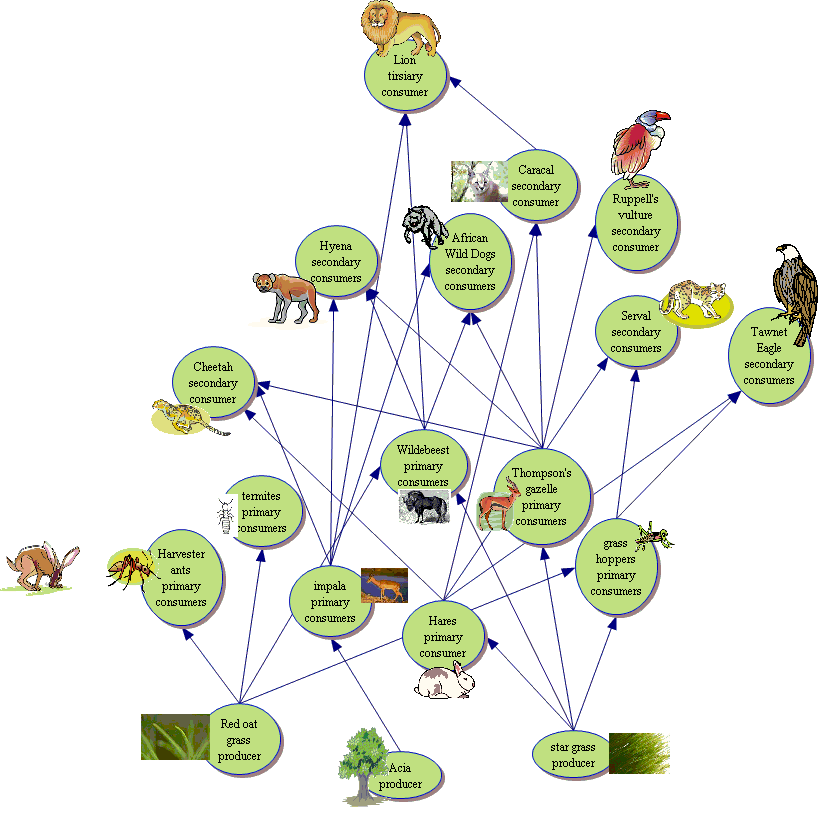
6 african savanna food webs in Biological Science Picture Directory Biological
This section is going to be about a three food chains of the savanna Star Grass --------> Gazelles --------> Cheetah ---------> Vulture Shrubs ---------> Elephants ---------> Hyenas ---------> Vulture Trees ---------> Zebras ---------> Lions --------> Vulture Producers: Producers that are in these food chains are star grass, shrubs, and trees.
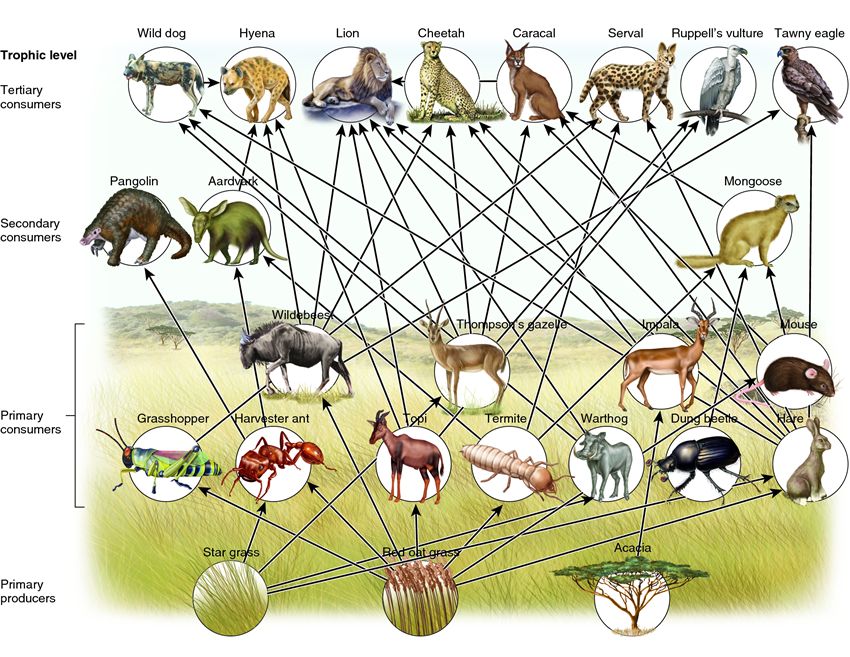
Food Web The Savanna Biome
Tertiary Producers of Australian Savanna The Producers include Grasses, Gum trees, Wattle trees, etc. Herbivore in Australian Savanna The major grazing mammals are feral ungulates that include buffalo, donkeys, horses, Wombats, Kangaroos, etc. Also, insects are major native grazers in Australian savannas. Secondary Consumers
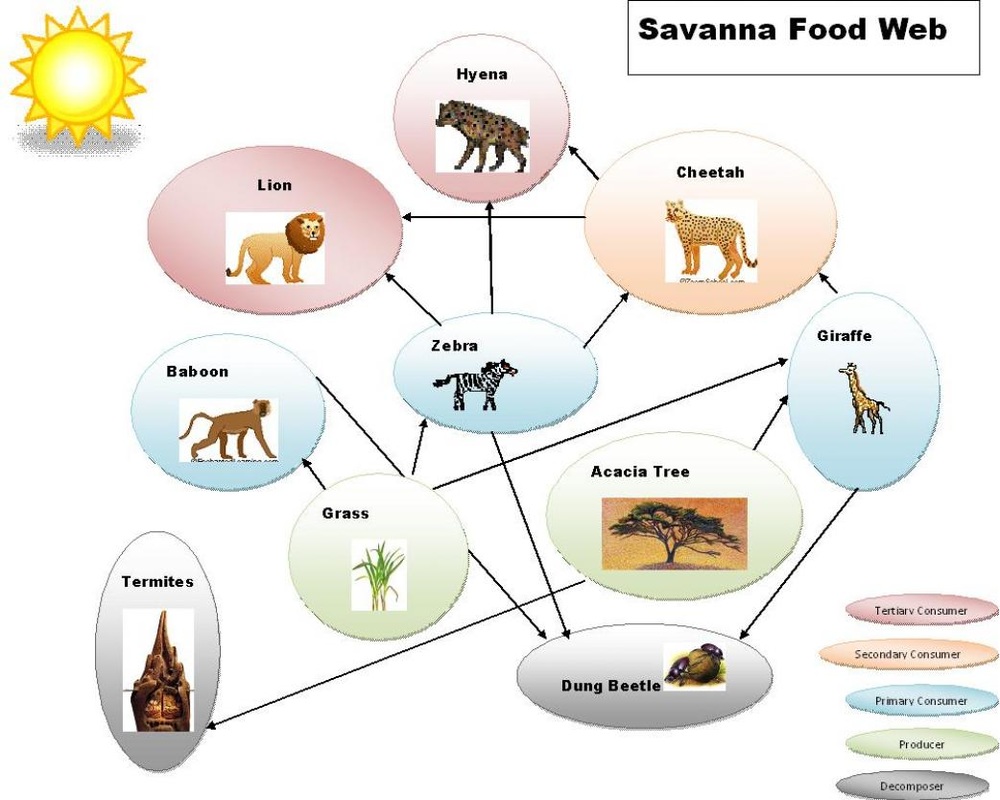
Food Chain & Food Web The Tropical grasslands/savannas biome
In Savanna Food Chains, early fluent readers explore the savanna biome and the food chains it supports. Vibrant, full-color photos and carefully leveled text engage young readers as they explore how energy flows through plants and animals who live in this dry, grassy environment. A map helps readers locate savanna biomes around the world, and.
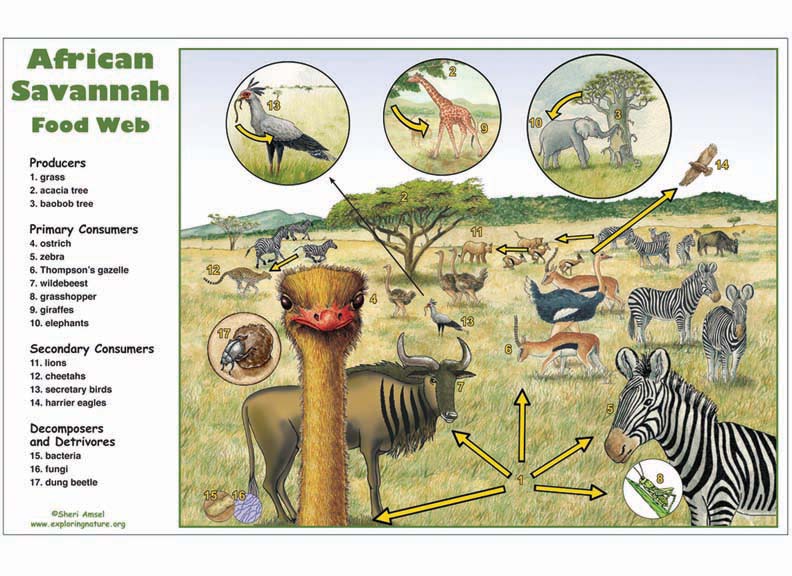
African Savannah Food Web Activity
Food chains show one of the links in a food web for an ecosystem. A food web for the savanna shows how energy flows between a producer, primary and secondary consumer. How does the.
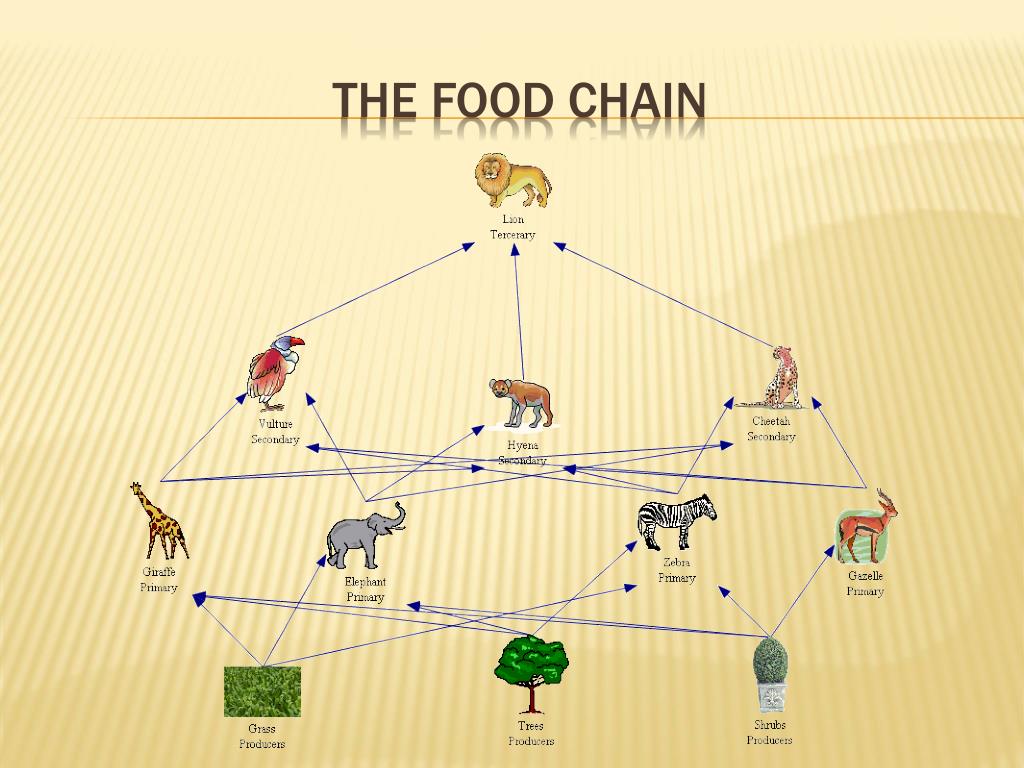
PPT The Savanna PowerPoint Presentation, free download ID2349879
Savanna Food Chain - YouTube 0:00 / 4:00 Savanna Food Chain Justine Reat 11 subscribers Subscribe Share 5.1K views 2 years ago The purpose of this digital story is to show how energy.
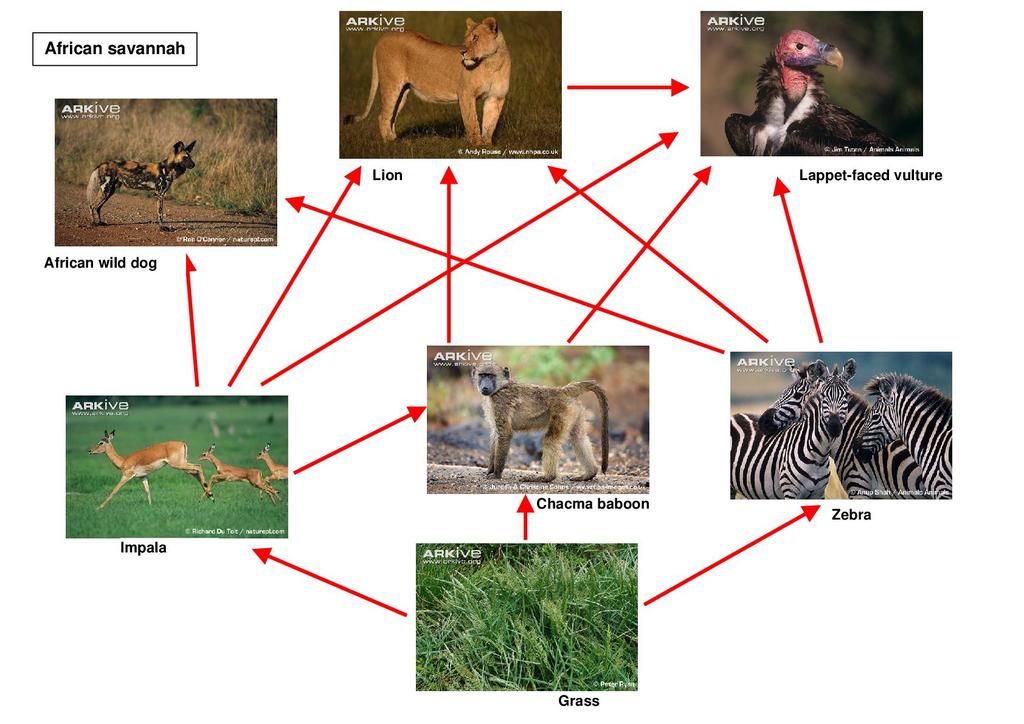
African Grassland Food Web
Examples of the Food Chain in the African Savanna - Synonym Examples of the Food Chain in the African Savanna LORI WEAVER 26 SEP 2017 CLASS. Food chains, or food webs, as they are sometimes called in recognition of their complexity, are part of life in the African savanna, just as they are in every biome on Earth.
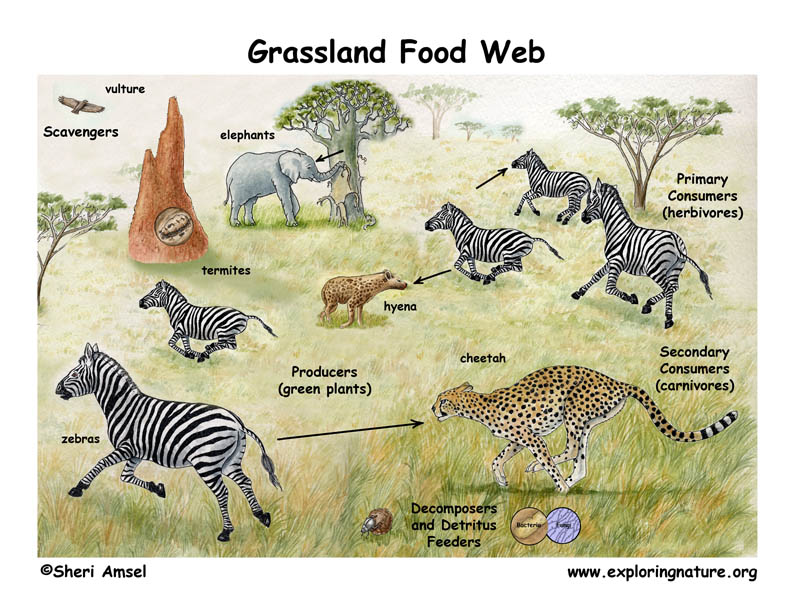
African Grassland (Savanna) Food Web
. Africa's grassland, or savanna, ecosystem is an open, grass-covered land with small, interspersed trees. Its diverse species play specific and important roles. Food chains trace the transfer of energy from one organism to another in an ecosystem.

food web
The food chain throughout the African savanna is shown on the left here. Plants and trees are the producers who photosynthesize, creating macromolecules which primary consumers such as zebras, steenbok, or elephants use to gain energy. These are primary consumers are then in turn eaten by secondary consumers such as cheetahs, hyenas or lions.
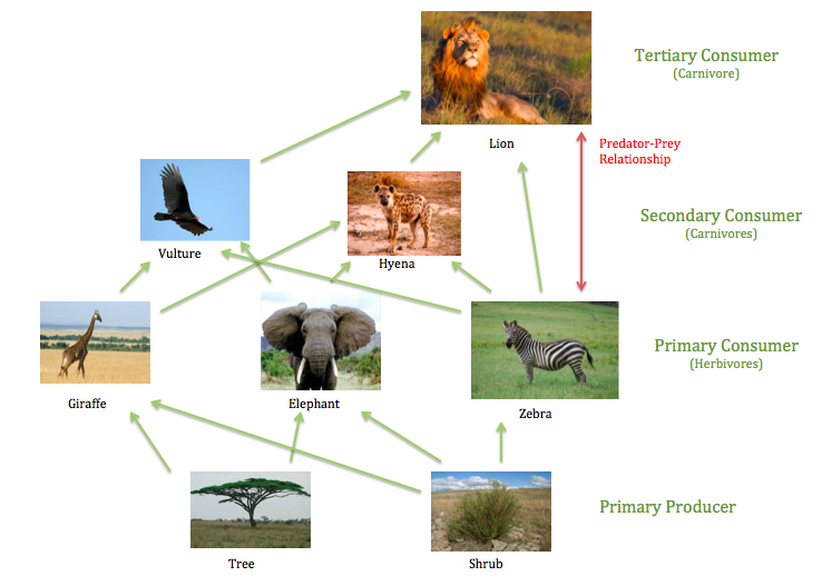
Food Chain & Food Web Tropical grasslands/savannas
Savanna food chain are producers like baobab, primary consumers like wildebeest, secondary consumers like baboon, tertiary consumers like cheetahs, and quaternary consumers like African crowned eagle. This article discusses the savanna food chain and its trophic components, as follows; 1).

Food Web
Grassland Food Chain. A food chain begins with the producers (autotrophs), these are the organisms that make their own food. Producers turn sunlight's energy, carbon dioxide (CO2), and water (H2O.

African Savanna Food Web Food Ideas
A food chain is a group of organisms linked in order of the food they eat, from producers to consumers, prey to predators, and scavengers to decomposers. The arrows in a food chain represent the flow of energy and matter between feeding (trophic) levels. Food chains show only one path of food and energy through an ecosystem.
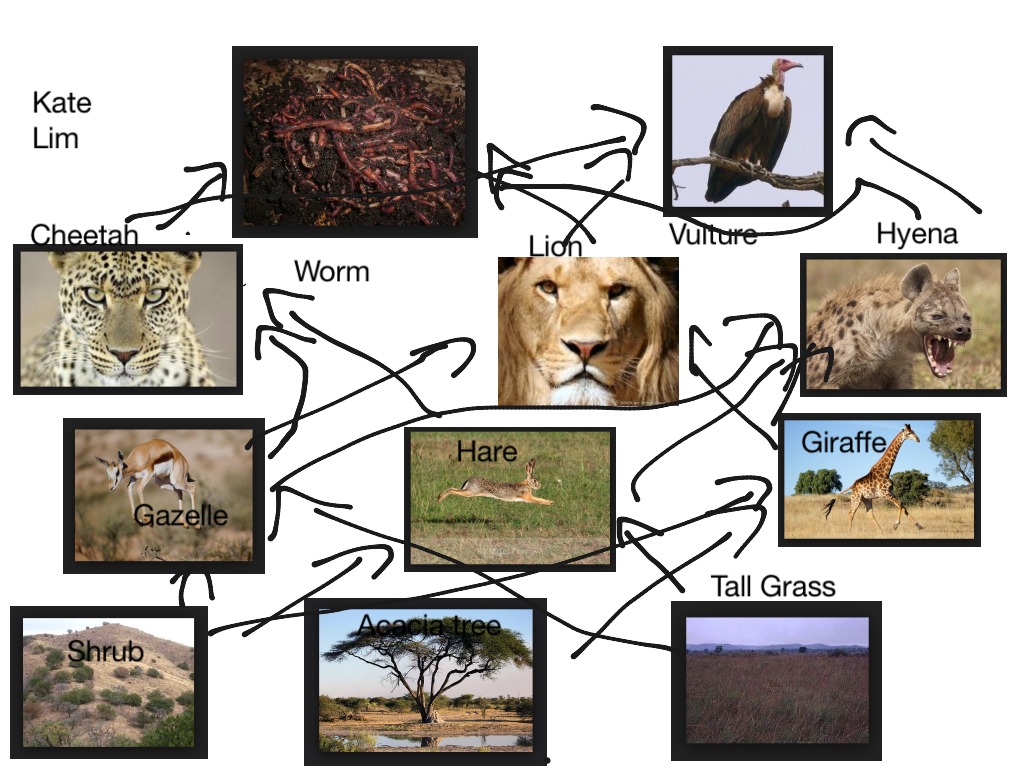
Kate's savanna food web Science, Food Webs ShowMe
Lions, hyenas, giraffes, and zebras are just a few of the many fascinating animals that help make up Savanna Food Chains. Children will enjoy learning about these animals, their habitat, and the plants and animals they eat. Photographs and illustrations help show - how savanna plants make food - the relationship between herbivores, carnivores, and omnivores - dangers to savanna food chains.

Savannah Food Web Food Ideas
Because animals eat so many things, the food chain has many overlapping parts, so is really a FOOD WEB. Last but not least, the DECOMPOSERS and DETRITIVORES eat and so recycle dead animals and plants (mushrooms, fungi, insects, bacteria). Nothing is wasted.

Savanna food web Illustration used in Gr 46 Natural Scien… Flickr
1). Food Chain 1 (as a component of the Savanna Food Web) The savanna food web is a complex ecological network formed by the trophic relationships between savanna plants and animals in different levels of different savanna food chains, such as food chain 1 that is outlined below; Primary Producers (Trophic level 1): Grass, Baobab Fruit, Twigs